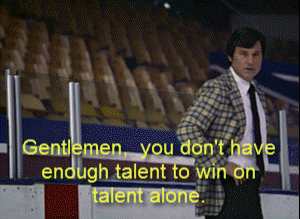
This post comes to us from Selene Fregosi, Graduate Research Assistant:
I feel like I experienced a miracle last week.

Possibly I am throwing around the word “miracle” because I’ve got Herb Brooks on my mind (thanks to my fellow grad student and FW intermural soccer coach Matt who is obsessed with that guy). Or perhaps that is actually what happened.
Let me set the stage. Will and Otis, our two Seagliders, were deployed off the coast of Newport, for what should have been a brief, straightforward test of their passive acoustic systems before they were shipped off to the Gulf of Mexico for a project there. Of course, that would not be as exciting of a story if it all went as planned.
I can’t remember how much I’ve talked about it before (I looked it up…try here and here), but basically, the way these gliders work is they go out and dive in the ocean, listen for marine mammals, and every time they surface they call in to a basestation, offload their location and some log files, and continue on their way. Well. Otis (SG608) did exactly that. It was his first flight with us and all went smoothly, from a piloting stand point. Will (SG607) on the other hand….well, he went rogue. And I don’t mean to the brewery.

Will stopped calling in after only 5 dives. Did I tell you this was my first “solo” piloting of the gliders? Yes, I was sort of freaking out.
But what happened the next few days is not important (I blacked it out so I can’t tell you because I don’t remember).
The point is….WE FOUND HIM!!!!!!!!!!
So (1) the miracle part: Let me explain the chances of finding Will. Best case scenario we were searching in about a 1 km radius of a point we THOUGHT the glider would be diving to. Worst case, it was floating at the surface and had drifted who-knows how many miles offshore. But lets complicate things. Glider at the surface, great, easier to spot. Glider continuously diving = glider down for 1 hour 40 mins, at the surface for 20 mins. So lets say we ARE in the right place. Well then it has to be the right time, and you better spot the thing during that 20 mins and get the boat over there before it goes back down for an hour and 40 mins and pops up somewhere else in that 1 km radius. Lets add in some wind waves (We are 35 nm offshore here) and some fog. And this is the image you are looking for:

(2) the waiting part. Will was missing for 4 and a half days. That doesn’t seem like that long. But when everytime your phone beeps that you get a text message and your heart jumps thinking maybe its the glider, that is a long 108 hours. But that is a lot of what we had to do. This was exacerbated for me because I had to stay on land during the search trips. I had to be at my computer in case we heard from the glider and I could give updates on GPS locations or timing. This was a new experience for me. I’m not real good at sitting still and waiting.

(3) the teamwork part. To me, the greatest outcome of the whole thing. There is NO way we could have found Will without all hands on deck, without awesome grad students and scientists who went out to look (Laurie, Niki, Erin, Theresa, Curtis, Alex, Haru, Matt, Dave), Anatoli and Steve for answering my piloting questions, a chartered fishing boat (ok…we paid them, Sara thanks for coordinating), TWO trips out, the people at iridium for putting up with my incessant phone calls, the dolphins that swam by the boat and provided moral support, Sharon and Holger for telling me not to freak out…I could go on. (and I’m SO SORRY if I am forgetting someone)
